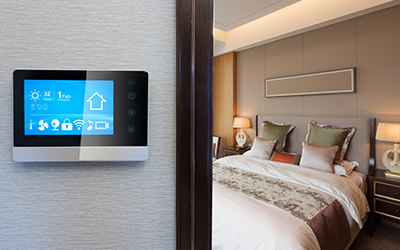
Source: Fxquadro/People/Adobe Stock.
Similar to our recent tablet report, consumer buying plans for desktops and laptops are starting the year slow. While the survey picked up a normal seasonal pattern, the outlook for Q1 was noticeably behind what we saw in Q1 2023, marking the second consecutive year of decreased buying intent.
This report presents the findings of S&P Global Market Intelligence 451 Research’s Q1 2025 Digital Endpoint Tracker, which asked US consumers about current tablet, desktop and laptop ownership, as well as customer satisfaction and purchasing plans.
Softness persists in laptop and desktop buying
Similar to the tablet market, consumers are planning to buy PCs at a similar rate as last year, with 18% planning to buy a desktop and 22% planning to buy a laptop in the next 12 months. While these results are on par with last year’s survey, they are down from two years ago (Q1 2023). Generationally speaking, baby boomers and the Silent/Greatest Generation are most likely to show an increase in their PC buying plans, whereas Gen Z and millennials are most likely to show a decrease.
PC ownership is nearly ubiquitous in higher-income households
Looking at the overall PC market, 82% of households say they own either a desktop computer, a laptop, or both. However, there are noticeable differences across income groups. More than nine in 10 (92%) higher-income respondents (more than $100,000 per year) say they have a PC in their household, compared with 74% among lower-income households (less than $50,000 per year). Notably, this 18-percentage-point gap in ownership is wider than the 12-point gap for tablets. One contributing factor is that lower-income households now own tablets at a higher rate than desktops. Also, the ubiquity of smartphones even among lower-income households reduces the need for traditional PCs, making them more of a luxury than a necessity.
HP and Dell have a near stranglehold on desktops
HP (33%) and Dell (30%) are the longtime leaders in the desktop market, while Apple (11%) remains solidly in third place. These three remain the only manufacturers with double-digit ownership.
In terms of planned buying over the next 12 months, Apple (25%) is on top, followed by HP (24%) and Dell (24%).
Apple’s leading position in planned desktop buying is largely influenced by Gen Z and millennials. As mentioned earlier, these cohorts show a decrease in overall PC buying, but they still have the highest percentages of planned desktop buyers within the next year.
HP is well ahead of competitors in the laptop market
HP (34%) enjoys almost double the laptop market share of Dell (18%) in the current survey, and around three times that of Apple (12%) and Lenovo (11%). Apple (25%) is again the top choice among respondents planning to buy a laptop in the next 12 months, followed by HP (23%) and Dell (19%). Staying in the conversation, Samsung (12%) is competing in a crowded laptop market. As with desktops, Apple’s popularity is driven largely by Gen Z and millennials, the cohorts most likely to purchase laptops over the next 12 months.
Gaming, streaming and email keep Gen Z tethered to PCs
With the widespread adoption of smartphones, conventional wisdom suggested that digital natives such as Gen Z might gravitate toward using smartphones for most of their personal computing needs, potentially forgoing traditional devices like desktops and laptops altogether. This is true to an extent, but specific use cases still necessitate the use of PCs. For gaming, video streaming and, somewhat surprisingly, email, in each case about a quarter of Gen Z respondents say they most often use a desktop or laptop computer.
Satisfaction remains important, but it is not the be-all and end-all
Typically, Apple has the highest percentage of owners who say they are satisfied with their devices. But in the current survey, PC satisfaction ratings for Dell and HP are on par with Apple. While Gen Z and millennials maintain a strong preference for Apple, that is not the case with other generations. Among income groups, lower-income households are more likely to opt for the combination of value and performance offered by Dell, HP and other brands.
Want insights on consumer technology trends delivered to your inbox? Join the 451 Alliance.

